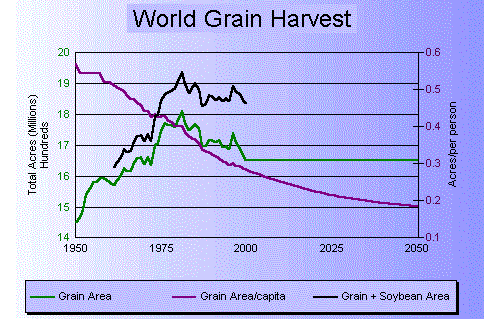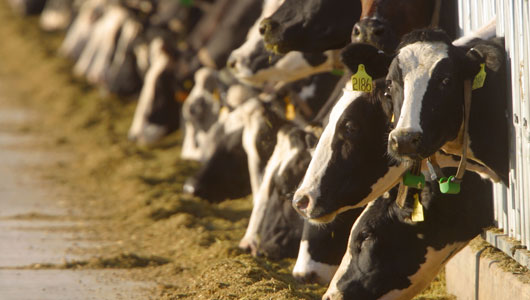According to an article on Trust.org, for the last decade and a half, a mysterious and worrisome trend has emerged in the farming world that has sent farmers, scientists and policy makers looking for answers. Crop yields – how much of a crop is harvested per hectare – for some of the world’s major grains like rice, wheat and corn have gone from increasing year after year to plateauing in many of the world’s biggest grain producers.

GROWING ARTIFICIAL DEMAND
The U.N. Food and Agriculture Organisation (FAO) predicted in 2009 that a growing and increasingly affluent population will require 70 percent more food by 2050, but Ken Cassman, Robert B. Daughtery, professor of agronomy at the University of Nebraska-Lincoln, says, “If we meet demand by expanding agriculture, that’s the worst thing you can do for climate change and biodiversity.”
The effects of upping grain production by expansion in rainforests and on prairies has devastated the world eco-system. What most people don’t realize, however, is that much of this grain expansion is fuelled by the need to feed grain-fed animals on feedlots.

“If all the grain currently fed to livestock in the United States were consumed directly by people, the number of people who could be fed would be nearly 800 million,” claims David Pimentel, professor of ecology in Cornell University’s College of Agriculture and Life Sciences
Today, the 7 billion livestock animals in the United States consume five times as much grain as is consumed directly by the entire American population. To demonstrate how grossly inefficient this model is, according to the article quoted above, each year an estimated 41 million tons of plant protein is fed to U.S. livestock to produce a scanty 7 million tons of animal protein for human consumption. That is like paying $6 for a $1 return on your investment.

“Raising animals for food is grossly inefficient, because while animals eat large quantities of grain, soybeans, oats, and corn, they only produce comparatively small amounts of meat, dairy products, or eggs in return. This is why more than 70 percent of the grain and cereals that we grow in this country are fed to farmed animals,” states a PETA article.
In the same article, PETA points out:
“It takes more than 2,400 gallons of water to produce 1 pound of meat, while growing 1 pound of wheat only requires 25 gallons. You save more water by not eating a pound of meat than you do by not showering for six months!”
It is easy to see the futility of this current food model and how much more well-off the world would be if those same grains were fed directly to humans. A plant-based diet is not only more cost-efficient, but according to the UN’s own report (Livestock’s Long Shadow), the environment would be better off if there were no factory farming of animals.
Food for Life Plant-based Solution to World Hunger
Food for Life Global was founded on the principle of honouring the spiritual equality of all beings through the liberal distribution of plant-based meals prepared with loving intention.

We believe that by the liberal distribution of plant-based meals, we not only can feed more people for less money, but also respect the environment and save the lives of billions of innocent animals. An estimated 50 billion animals are killed annually as food. Considering how much water and grain production it takes to feed this over-population of grain-fed animals, it is easy to see the solution to world hunger.
Hunger is not due to lack of grains. Hunger is due to an artificial demand for animal-protein and the inequitable distribution of those grains to humans.
By supporting Food for Life Global vegan food relief you are voting with your dollars for a more sustainable and peaceful world — a world where all living beings are respected and hunger and poverty are a thing of the past.
[paypal-donation]





